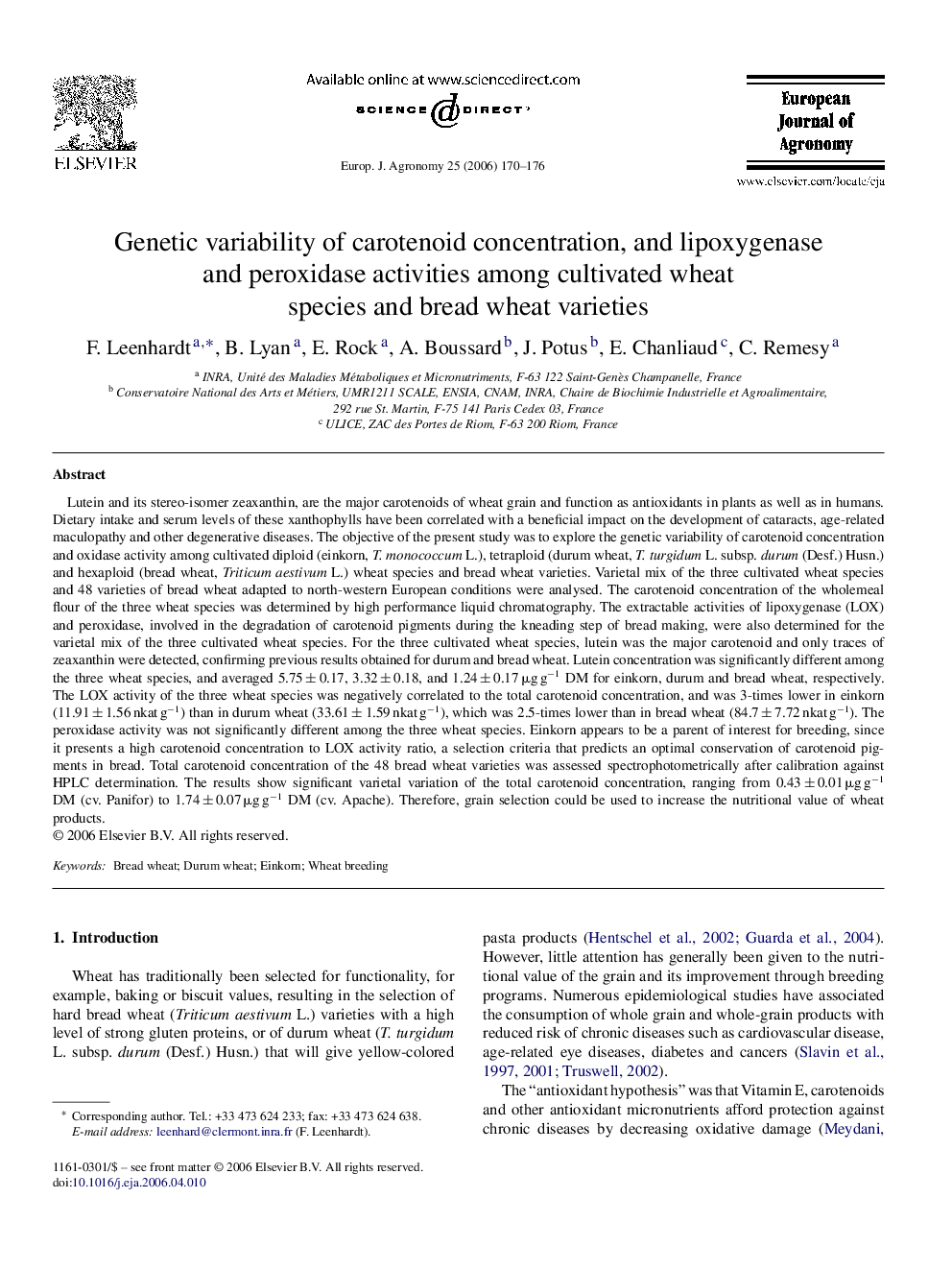| کد مقاله | کد نشریه | سال انتشار | مقاله انگلیسی | نسخه تمام متن |
|---|---|---|---|---|
| 4509716 | 1624530 | 2006 | 7 صفحه PDF | دانلود رایگان |

Lutein and its stereo-isomer zeaxanthin, are the major carotenoids of wheat grain and function as antioxidants in plants as well as in humans. Dietary intake and serum levels of these xanthophylls have been correlated with a beneficial impact on the development of cataracts, age-related maculopathy and other degenerative diseases. The objective of the present study was to explore the genetic variability of carotenoid concentration and oxidase activity among cultivated diploid (einkorn, T. monococcum L.), tetraploid (durum wheat, T. turgidum L. subsp. durum (Desf.) Husn.) and hexaploid (bread wheat, Triticum aestivum L.) wheat species and bread wheat varieties. Varietal mix of the three cultivated wheat species and 48 varieties of bread wheat adapted to north-western European conditions were analysed. The carotenoid concentration of the wholemeal flour of the three wheat species was determined by high performance liquid chromatography. The extractable activities of lipoxygenase (LOX) and peroxidase, involved in the degradation of carotenoid pigments during the kneading step of bread making, were also determined for the varietal mix of the three cultivated wheat species. For the three cultivated wheat species, lutein was the major carotenoid and only traces of zeaxanthin were detected, confirming previous results obtained for durum and bread wheat. Lutein concentration was significantly different among the three wheat species, and averaged 5.75 ± 0.17, 3.32 ± 0.18, and 1.24 ± 0.17 μg g−1 DM for einkorn, durum and bread wheat, respectively. The LOX activity of the three wheat species was negatively correlated to the total carotenoid concentration, and was 3-times lower in einkorn (11.91 ± 1.56 nkat g−1) than in durum wheat (33.61 ± 1.59 nkat g−1), which was 2.5-times lower than in bread wheat (84.7 ± 7.72 nkat g−1). The peroxidase activity was not significantly different among the three wheat species. Einkorn appears to be a parent of interest for breeding, since it presents a high carotenoid concentration to LOX activity ratio, a selection criteria that predicts an optimal conservation of carotenoid pigments in bread. Total carotenoid concentration of the 48 bread wheat varieties was assessed spectrophotometrically after calibration against HPLC determination. The results show significant varietal variation of the total carotenoid concentration, ranging from 0.43 ± 0.01 μg g−1 DM (cv. Panifor) to 1.74 ± 0.07 μg g−1 DM (cv. Apache). Therefore, grain selection could be used to increase the nutritional value of wheat products.
Journal: European Journal of Agronomy - Volume 25, Issue 2, August 2006, Pages 170–176